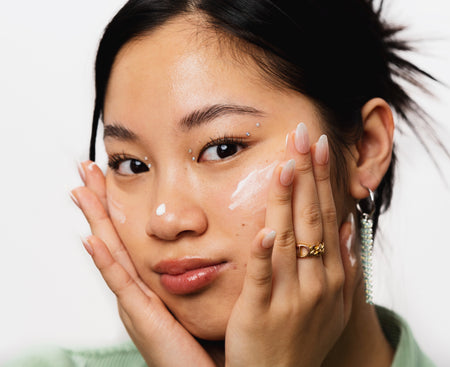Mineral vs. Chemical Sunscreen: What's the Difference?

How do mineral and chemical sunscreens work? How safe are they for your health and the environment? Which is better? We're debunking some common myths so you'll feel like an expert by the time you've reached the end of this post.
Myth 1: Mineral sunscreen reflects, and chemical sunscreen absorbs
For decades, everyone from cosmetic chemists and formulators to dermatologists believed that mineral sunscreens work by reflecting UV rays, whereas chemical sunscreens absorb.
A 2015 study proved this wrong by finding that that BOTH mineral and chemical UV filters reflect UV rays and absorb and convert them to heat.
Zinc Oxide and Titanium dioxide, which are widely considered as “mineral” filters, are an example of ingredients that absorb the UV rays. In fact, they only reflect about 5% of UV rays, meaning the remaining 95% are absorbed.
TLDR; mineral and chemical sunscreens generally work in the same way by absorbing UV rays and converting them to heat.
Myth 2: Mineral sunscreen is cleaner and more natural than chemical sunscreen
While the ingredients found in mineral sunscreens, such as Zinc Oxide and Titanium Dioxide, are derived from minerals, they go through rigorous chemical treatment and processing to make them solubilized and stabilized for cosmetic use. Due to this, the mineral particles are synthetic and chemical at the same time.
TLDR; labeling mineral sunscreens to be all natural, non toxic, and clean is inaccurate.
Myth 3: Chemical sunscreen enters your bloodstream
Back in 2020, the FDA published a study that showed 6 FDA approved chemical filters were detected in blood after just one application of chemical sunscreen. Not only did this make the general public panic, but many people neglected the fact that the FDA still suggested using sunscreen, regardless of these findings. There is no evidence that having trace amounts of sunscreen filters in the bloodstream is harmful, and chemical sunscreen is deemed to be safe and effective.
However, this finding will hopefully urge the US FDA to approve newer generation sunscreen filters, which would provide a wider range of application enhancements (no white cast, irritation, etc.) so more people would be encouraged to wear sunscreen. At the end of the day, the benefits of sunscreen far outweigh the fear of unharmful traces of filters found in the bloodstream.
TLDR; Chemical sunscreen filters have been shown to enter the bloodstream, however they are still safe and recommended by the FDA.
Myth 4: Mineral sunscreens are coral reef-safe and chemical sunscreen is harmful to marine life and the environment.
When Hawaii banned two chemical UV filters, Oxybenzone and Octinoxate, this myth gained more traction and it was more commonly believed that chemical sunscreens are bad for the environment, specifically marine life. But as more research was collected, it showed that Zinc Oxide (found in mineral sunscreen) contributes to coral bleaching, making mineral and chemical sunscreens equally responsible for negative marine life impacts.
However, current research doesn't show that sunscreen is the main culprit of bleaching the coral reefs. Climate change, rising sea water temperatures, acidifying waters, increasing sea levels, and other environmental factors are the bigger issue for marine life.
TLDR; both mineral and chemical sunscreens can impact the coral reef bleaching, however bigger environmental changes remain the major culprit of this.
At the end of the day, the best sunscreen choice is one that you WANT to wear! Both mineral and chemical sunscreens have benefits and drawbacks, so finding the right sunscreen for your skin type is the most important.
 Matcha Hemp Hydrating Cleanser
Matcha Hemp Hydrating Cleanser Oat So Simple Water Cream
Oat So Simple Water Cream Beet The Sun SPF 40 PA+++
Beet The Sun SPF 40 PA+++ Great Barrier Relief
Great Barrier Relief Kale-Lalu-yAHA
Kale-Lalu-yAHA






